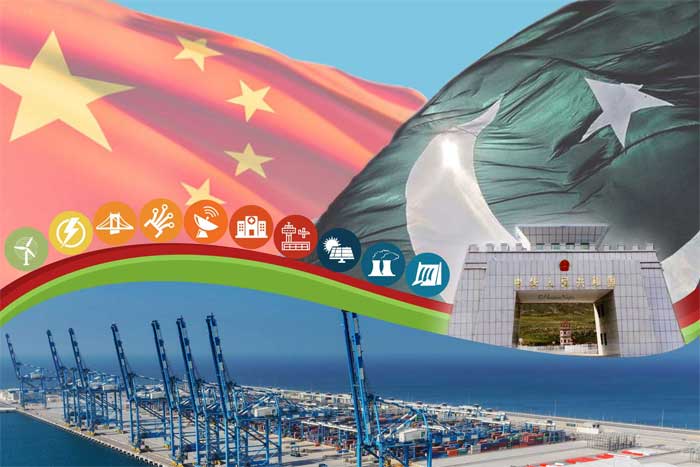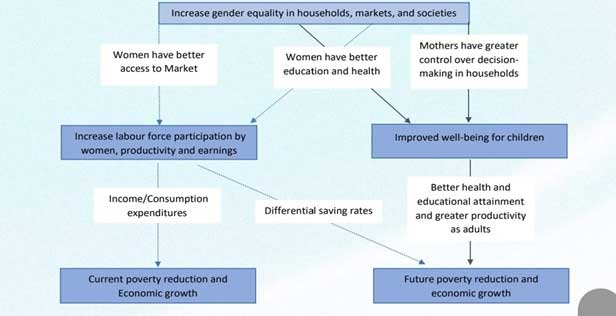
The importance of the China-Pakistan Economic Corridor (CPEC) for economic growth, living standards, and sustainable development goals has made it a major area of discussion. If we look at the bilateral connection and historical background of China and Pakistan then this project is the largest economic corridor through which, both nations hope to achieve different objectives. In particular, Pakistan wants to overcome obstacles in the areas of social welfare, energy, and economic development, while China wants to expand its trade routes and trade periphery in the international market to achieve rapid economic growth. In terms of trade, economic development, and growth, CPEC seems to be the fate-changing project for the economies of China and Pakistan where rural and urban populations in both nations would profit from it. As, the
The China-Pakistan Economic Corridor (CPEC) has the potential to significantly improve economic prosperity and individual well-being, making it a “game-changer” for both Chinese and Pakistani residents as well as officials but the question of how CPEC would influence the living standards of the rural population still unanswered where, the improvement in the benefits associated with the living standards and the basic facilities available focused on the growth opportunities, quality of life and self-enhancement opportunities where different economists highlights different national, regional, and local factors that influences development of rural communities but social capital theory emphasis on the role of social relationship as it act as one of the resources that facilitates the accumulation and development of human capital.

Due to low social standing, residents of the rural regions face prejudice on both a social and cultural level that translates in the form of economic and social discrimination in the form of limited or nonexistent job prospects; high wage discrimination; restricted access to socioeconomic chances; restricted access to health facilities and occupational segregation causing urbanization but CPEC being the game changer may support Pakistan in the development of local infrastructure that aids in raising the standard of living in the surrounding populations. In particular, the efforts provide women in Pakistan with greater economic options, which benefits them equally in both rural and urban regions. If we consider the example of the Coal Power Plant Project Initiative of the China-Pakistan Economic Corridor (CPEC), which is not directly linked to sustainable aims but is anticipated to not only enhance the lives of women involved in farming but also to expand their prospects in other plants and projects. Similarly, megaprojects also have the potential to benefit society by improving the socio-economic conditions of men and women in different regions so, there is no doubt in the fact that, CPEC not only bolstered economic and financial coordination but has also facilitated people to people connect and cultural ties that obviously promote mutual understanding between the nations.
If we analyze the economic dimension of any nation than we realize the fact that, economic prosperity always require socioeconomic diversity that demand education for all including women but in developing nations like Pakistan, middle-class and upper-class women have relatively direct access to professional work and higher education but majority of women in rural areas have very limited access to jobs, healthcare, and educational opportunities because the nation’s tribal communities’ have firm control over these areas where women already confronted with the challenges of limited mobility so, the existing situation of political instability and inadequate infrastructure makes it difficult for women to regulate their lives which demands a multi-social process in order to facilitate women’s self-determination. Thus CPEC is a game changer for the country as it generates social and economic benefits, but for the local rural community it is a fate changing opportunity as many of its projects move around the local rural community and local women. As we all knows that economic prosperity of Pakistan is not possible without participation of its women in the National development process because it comprises of more than 50% of its population. If we go through the obstacles to development than we realize the fact that, gender bias is a curse for development where removal of gender bias only meant for equal opportunities but unfortunately, we witness that, women’s role for economic development has not freed them from the burden of domestic work but added a burden to their backs and nerves. If we put another way, they support their family, the nation, and society, but the issues they personally confront are disregarded. They lack the chance to influence events in society in a way that is constructive, energizing, and well-defined where, CPEC plays its pivotal role in promoting the economic prosperity of member nations like China and Pakistan. The former benefited from the development of internal infrastructure that raised living standards within the neighborhood. These measures also assist Pakistani women who live in rural and urban areas. The advantages of CPEC are felt across all of Pakistan; for women in particular, they represent a means of economic empowerment that is not limited to any one area. We all are aware that, rural population particularly women endure several difficulties and disadvantaged in work, education, and health care, especially women.

For local community in Pakistan, the scope of employment prospects has been greatly increased by CPEC. Furthermore, CPEC is a significant initiative acknowledged by millions of jobs across other industries which had a noteworthy impact on the socio-cultural and economic well-being of the local Pakistani community which created numerous employment opportunities and diverse venues and streams for women through better education that raised living standards, and fostered development and prosperity. Many critics of CPEC believes that there is no impact of CPEC on education but CPEC also initiates a project centered toward women’s education. Furthermore, CPEC is connected to numerous education-related projects both directly and indirectly. CPEC projects, often known as universities and vocational training facilities, have also been established. As a result of the CPEC’s development, efforts have been made to support and empower women by giving them access to contemporary information and skills, enabling them to contribute effectively to society as a whole. Through CPEC connectivity such as roads and railroads, rural and metropolitan areas are connected, empowering local residents to enhance their quality of life. Nonetheless, it has been found that women’s quality of life has increased dramatically since CPEC was initiated but it is recommended to the state that, the public needs to be made aware of the benefits of the CPEC program, which might spur additional corporate growth and the extension of important projects in these regions. Therefore, in order to ensure that the poor and disadvantaged are well-off and have access to basic social services. It is therefore, recommended that,
1. Policy makers, media and social activists must join hands to address the negative rumors and campaigns about CPEC. Doing so will both increase the effectiveness of projects aimed at reducing poverty and promote the sustainable development of local communities.
2. Pakistan being the part of third-world nation facing significant issues such as a shortage of skilled labor due to the labor force being dominated by women, the exodus of highly qualified professionals, a dearth of practical education, and pay stagnation, particularly with regard to the proper participation of women in the aforementioned fields.
3. CPEC is the most frequently debated subject that is typically associated with efforts related to energy, roads, and connectivity. Beyond this particular interpretation, CPEC is preparing the country to welcome a significant influx of Chinese tourists and investors. Building the skills of women in the workforce in a variety of fields, including cultural studies, is necessary to achieve this.
4. In the framework of the China-Pakistan Economic Corridor (CPEC), Pakistan faces a major labor shortage unless it can develop competent and diversified human resources in a number of industries. This issue is exacerbated by the lack of educated and capable women in the workforce.
5. In view of economic globalization, which is exemplified by CPEC, a comprehensive human resource development policy for women is required at the national level.
6. The policy paper addresses women’s involvement in small and medium-sized businesses that are closely related to China-Pakistan Economic Corridor (CPEC), including logistical challenges, services, and food production, joint ventures in the media and arts, and opportunities for women to receive training in higher education.
China-Pakistan Economic Corridor (CPEC), that comprises of many termed projects and initiatives are disruptive to Pakistan’s economy. Its success, though, hinges on inclusive policy-making that takes into account the needs of all workforce segments, including women. Because, women, who make up over half of the population of Pakistan are the only source that accelerates the pace of growth and prosperity of Pakistan.




